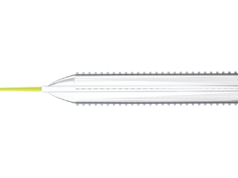
Cagent Vascular recently announced the investment of US$9 million by Sectoral Asset Management. Along with the investment, Marc-Andre Marcotte has joined the board of directors. The proceeds will be used to accelerate the commercialisation and scaling of manufacturing for the Serranator below-the-knee (BTK) product. Further uses of proceeds include expanding the product offering to include larger sizes to treat the above-the-knee arteries.
The Serranator percutaneous transluminal angioplasty (PTA) serration balloon catheter is an angioplasty device with serrated metal strips embedded on a semi-compliant balloon. The Serranator’s unique technology is designed to create multiple longitudinal lines of interrupted micro-serrations within the luminal surface to aid in arterial expansion. The result is predictable and controlled lumen gain using low atmospheres of pressure.
“Our BTK product launch is going extremely well. Early commercial adoption and clinical outcomes are confirming the positive results seen in the PRELUDE-BTK study. We are delighted to have a high-quality investor like Sectoral join our team. Their deep experience investing and advising device companies focused on peripheral vascular interventions will enable a more rapid expansion of our commercial efforts,” stated CEO Carol A Burns.
Marc-Andre Marcotte, of Sectoral, added, “We have been very impressed by Cagent’s achievements thus far and are excited to partner with them. We are confident that the unique features and high-quality clinical data of Serranator will drive strong market adoption.”
The Serranator’s differentiated mechanism of action is driving adoption. “The BTK space is in desperate need of innovation. These vessels are more challenging in terms of size, lesion length, and calcification and non drug-based balloon angioplasty is still the primary treatment. My experience with Serranator has been excellent and with its novel mechanism of action it has become an important tool in treating BTK disease. In the near future I look forward to using this technology in vessels above the knee to further optimise my angioplasty results,” explained Sarang Mangalmurti interventional cardiology specialist at Bryn Mawr Hospital (Philadelphia, USA).













